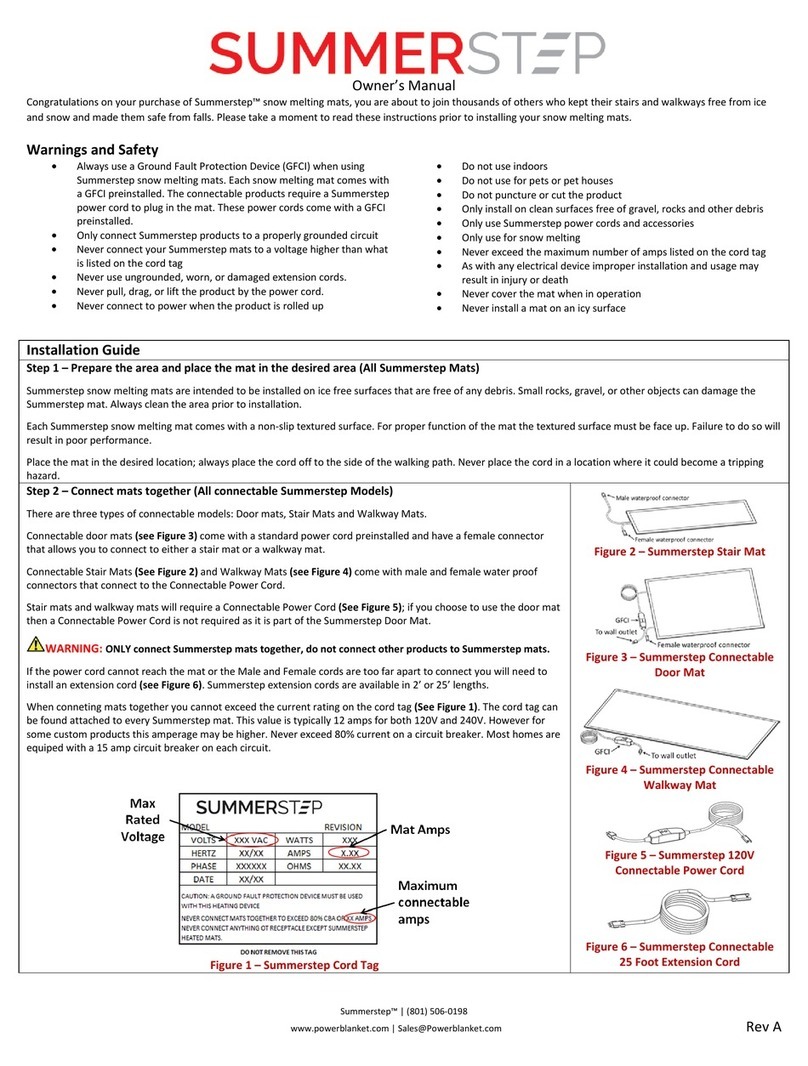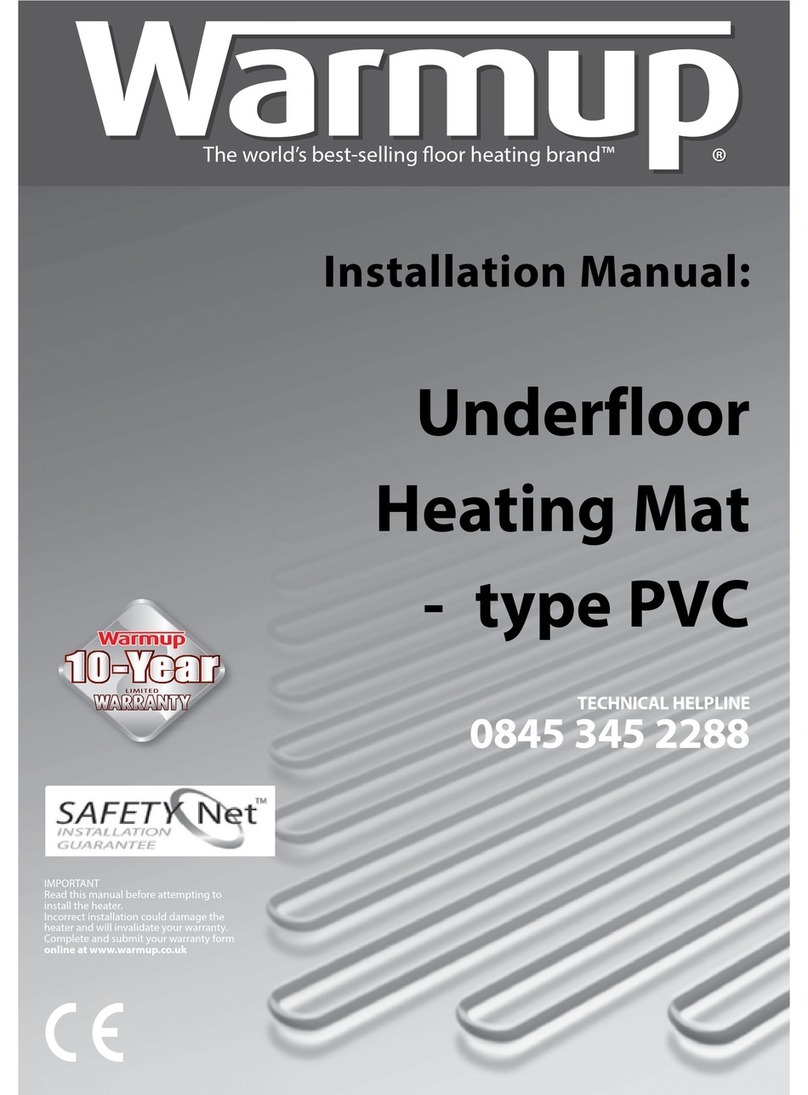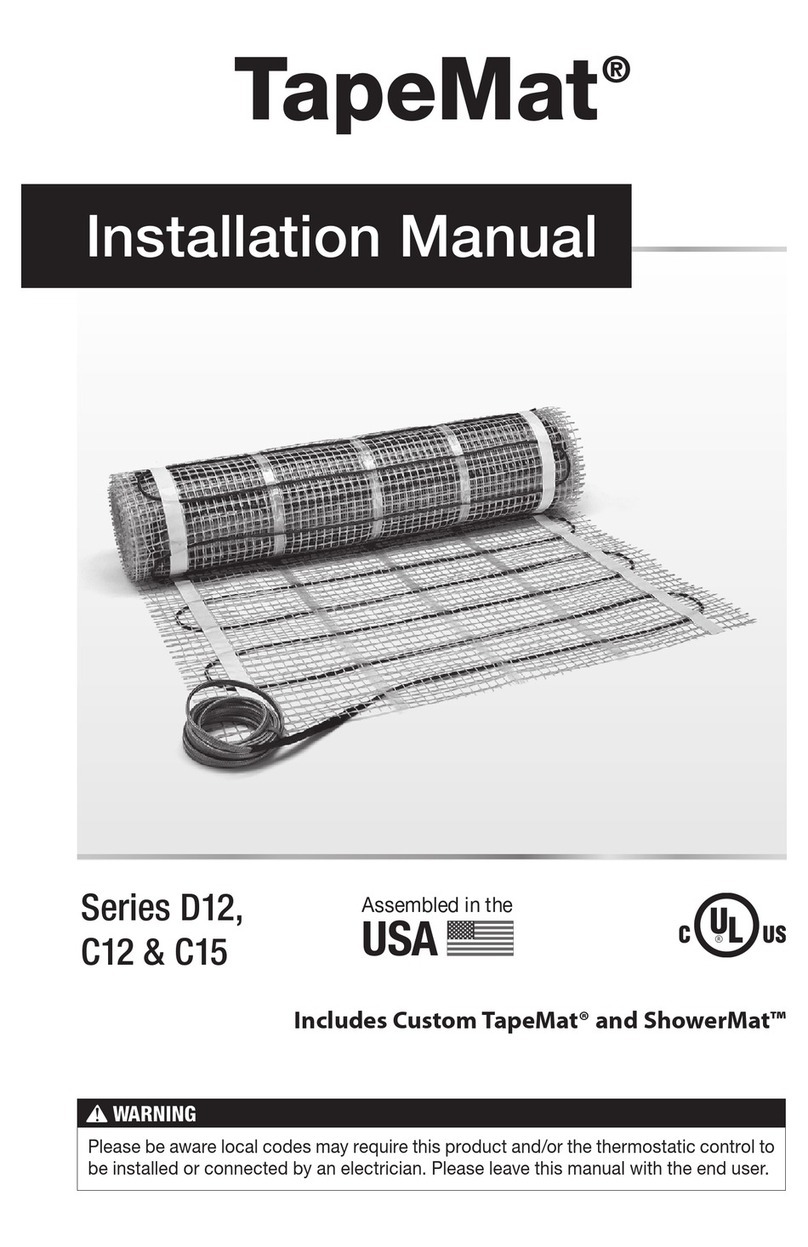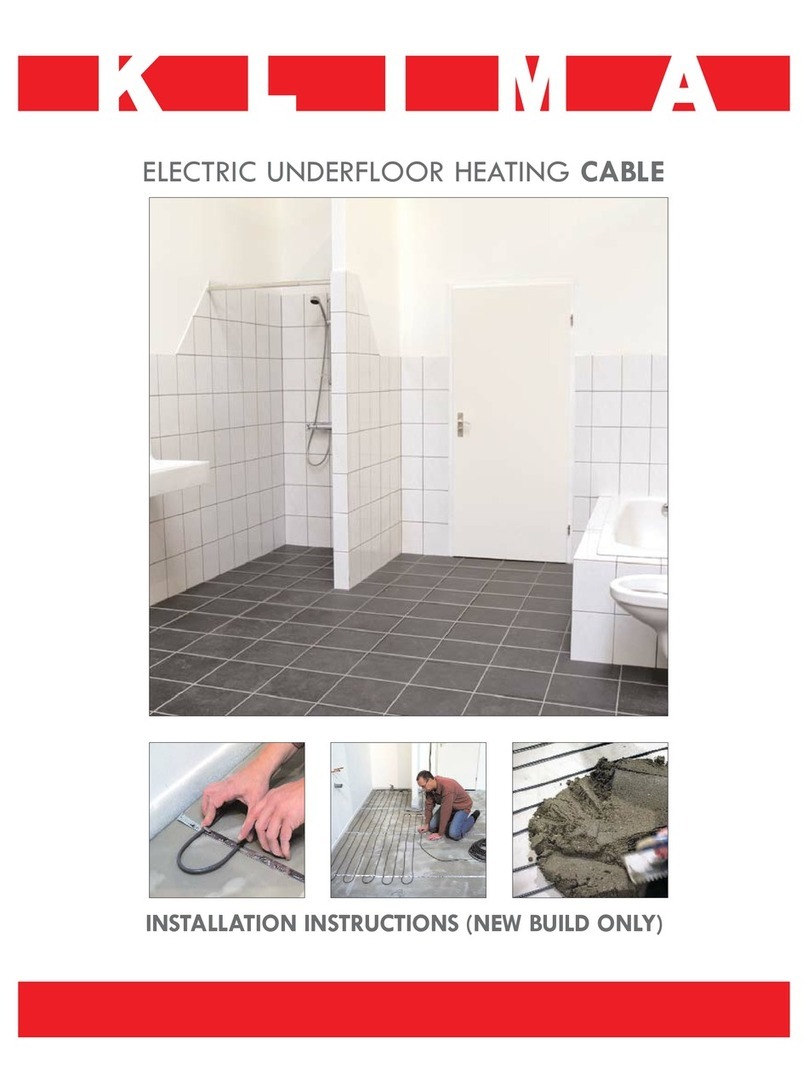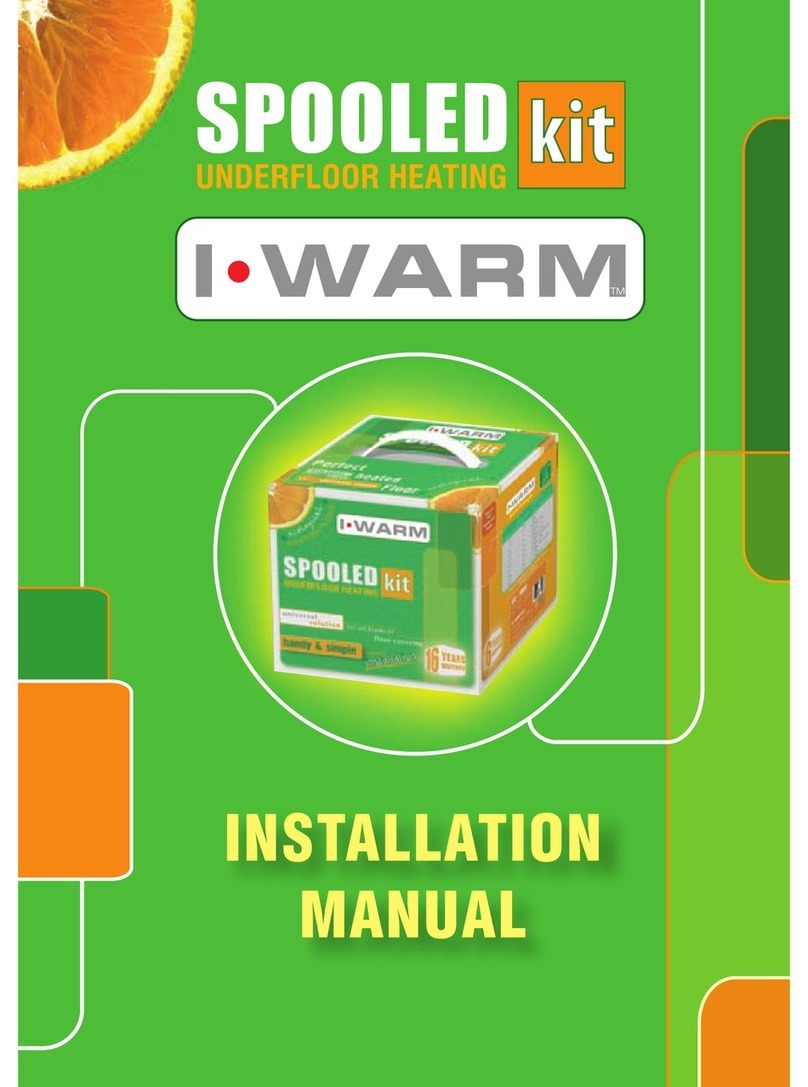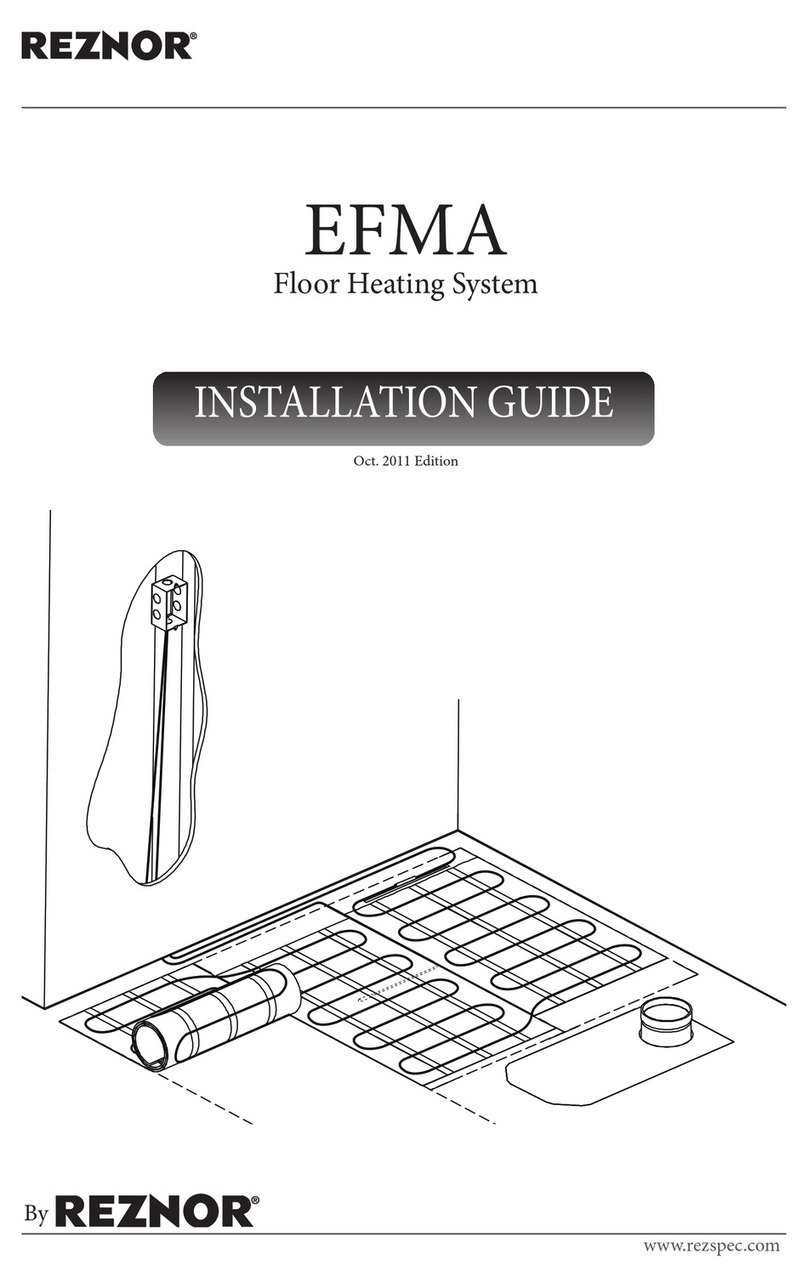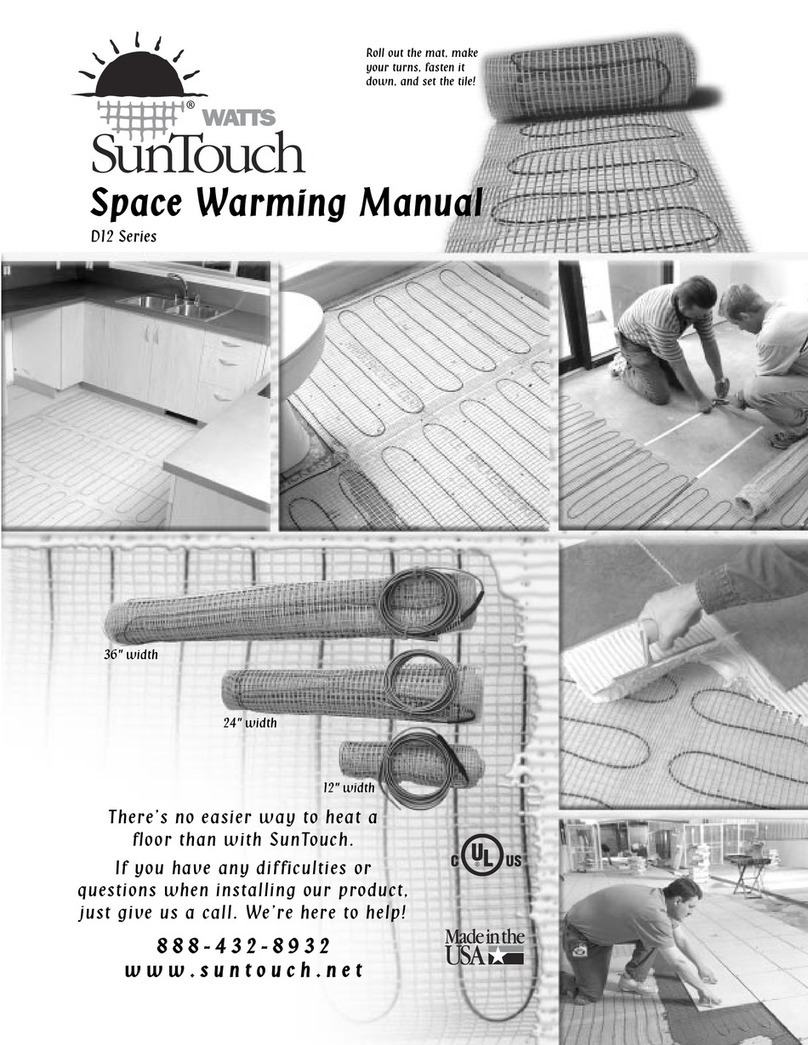8
Warmset is an electrical product. The appropriate precautions and
care that are associated with electrical installations should be taken.
Always be aware of risks of electric shock, re, and/or injury to
persons. Please read carefully and observe all precautions listed in
these pages.
Attention!
<
<
<
<
<
<
<
<
Caution
Always install a Class “A” GFCI or EGFPD circuit breaker with each Warmset
mat installation. Note: All Warmset thermostats come equipped with a built-
in Class “A” GFCI or EGFPD.
Always use caution when working with tools around Warmset mats. Be
careful not to nick or cut the heating ribbon.
Always completely embed Warmset mats in minimum 3/8”self-leveling
compound and thinset mortar, or other polymer-modied, cement-based
mortar.
Always adhere to all power limitations of the breaker, thermostat, and
chosen Warmset Mat. Be sure the Voltage and Current are appropriate for the
system.
Always install Warmset mats on a dedicated 20 A circuit.
Always make sure all electrical work is done by qualied people in
accordance with local electrical and building codes.
Always use copper wiring to complete the connections in the Warmset
system.
Always seek help or clarity if problems arise. If in doubt about any
installation procedures, or if the product appears to be damaged, please
contact Warmset before starting the installation process.
All Installations must be performed by qualied personnel
in accordance with all local regulations and building codes.
Thoroughly read and follow the installation instructions and
warnings before beginning installation.
Failure to do so can result in electric shock, re, property
damage, personal injury, and/or death.
Always
